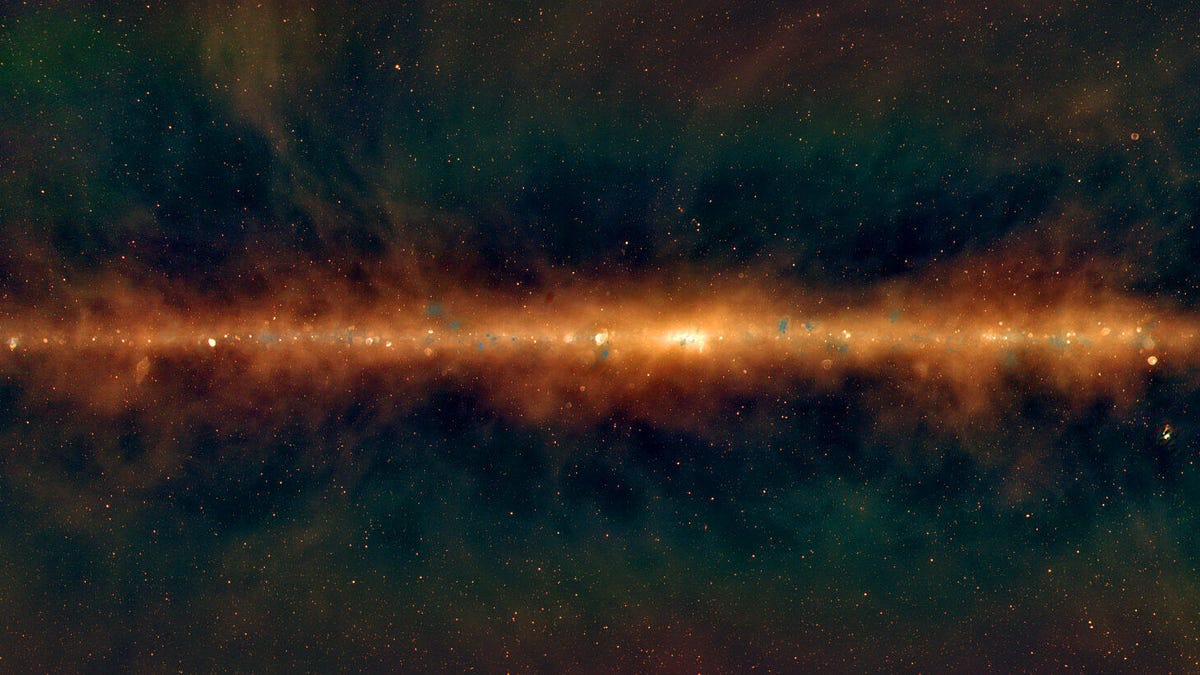Vibrant new Milky Way view lights up the heart of our galaxy
Get lost in a glowing telescope vision of our home galaxy.
If human eyes could see radio waves, space would look very different to us.
A team of scientists used the Murchison Widefield Array telescope in Australia to help humans experience the wonders of our home galaxy from a telescope's point of view. A stunning new image from the MWA looks to the middle of the galaxy at an area known as the Galactic Center.
"Huge golden filaments indicate enormous magnetic fields, supernova remnants are visible as little spherical bubbles, and regions of massive star formation show up in blue. The supermassive black hole at the center of our galaxy is hidden in the bright white region in the center," said the International Centre for Radio Astronomy Research in a release on Wednesday.
This data isn't just beautiful to look at it, it's also helping astronomers locate previously undetected supernovae. The team, led by astrophysicist Natasha Hurley-Walker from Curtin University, discovered 27 of these exploded star remnants in the telescope's observations.
Astronomers located 27 supernova remnants in a Milky Way survey conducted by the Murchison Widefield Array telescope in Australia.
One of the supernovae would have exploded around 9,000 years ago and may have been visible to Earth. That means it could possibly be part of Aboriginal oral history.
"Now that we know when and where this supernova appeared in the sky, we can collaborate with Indigenous elders to see if any of their traditions describe this cosmic event," said cultural astronomy expert Duane Hamacher from the University of Melbourne.
The MWA view of the Milky Way center is a good companion piece to some other recent galaxy glamour shots. NASA's Chandra X-ray Observatory gave us a glowing look in July. A NASA panorama created from Transiting Exoplanet Survey Satellite data showed us how the galaxy trails scenically across the southern sky.
Any way you want to look at it, the Milky Way is a sight to behold.


